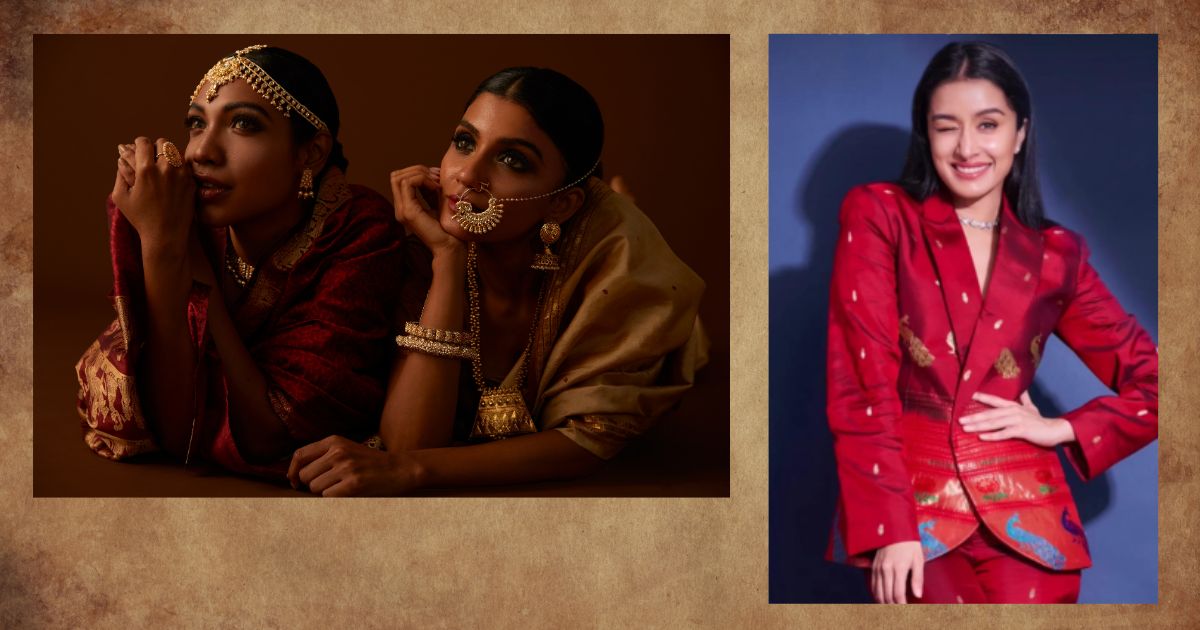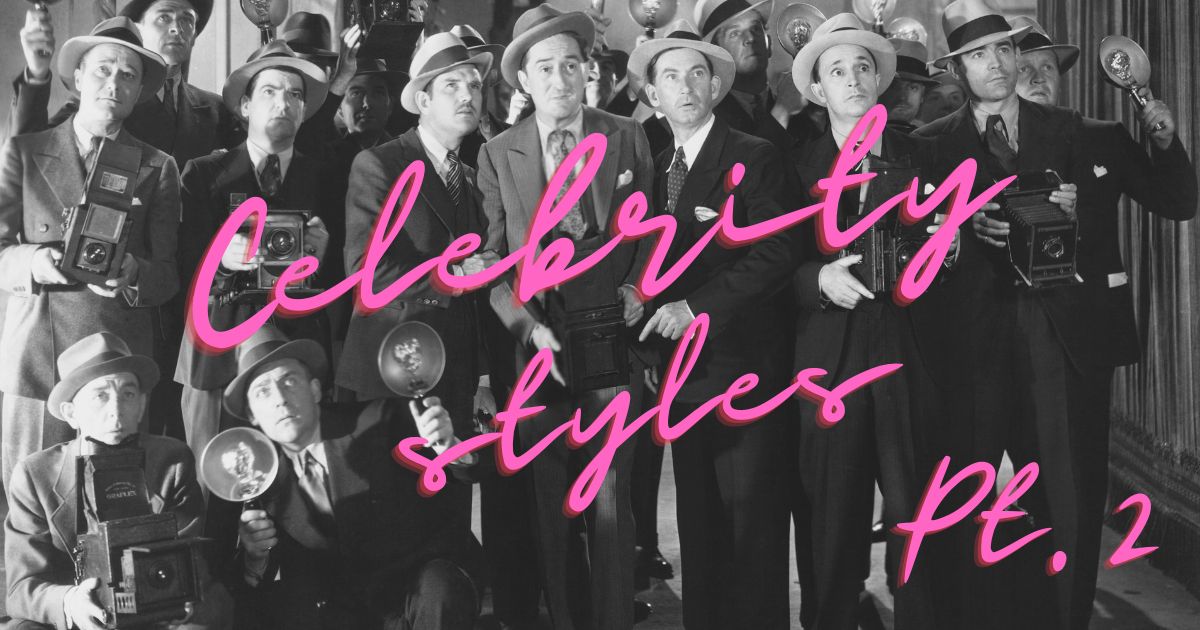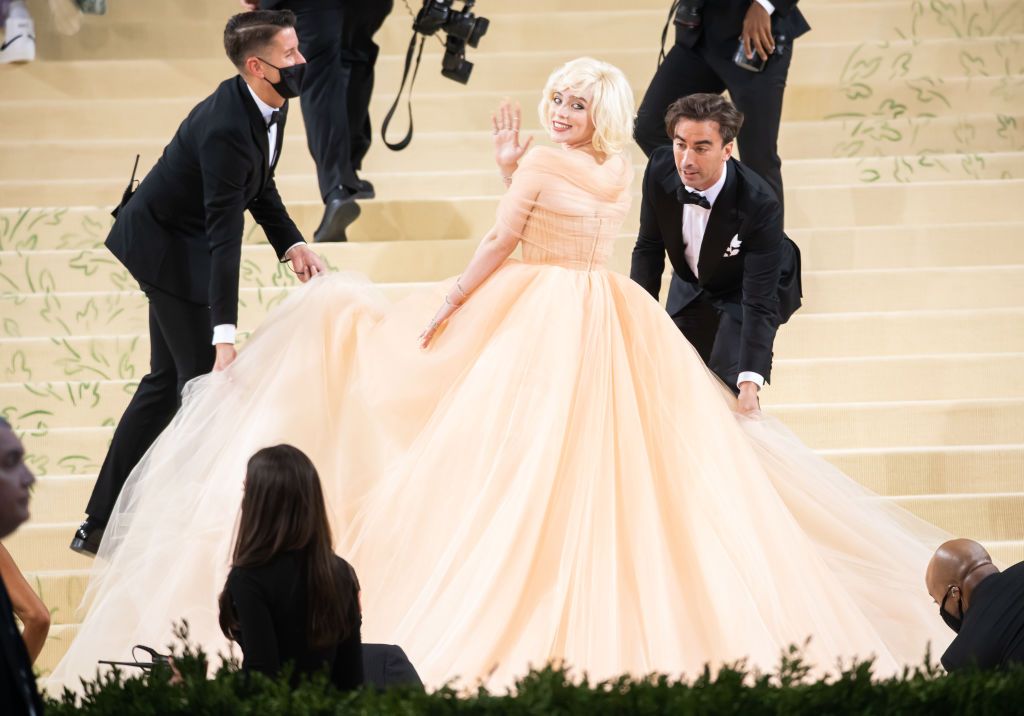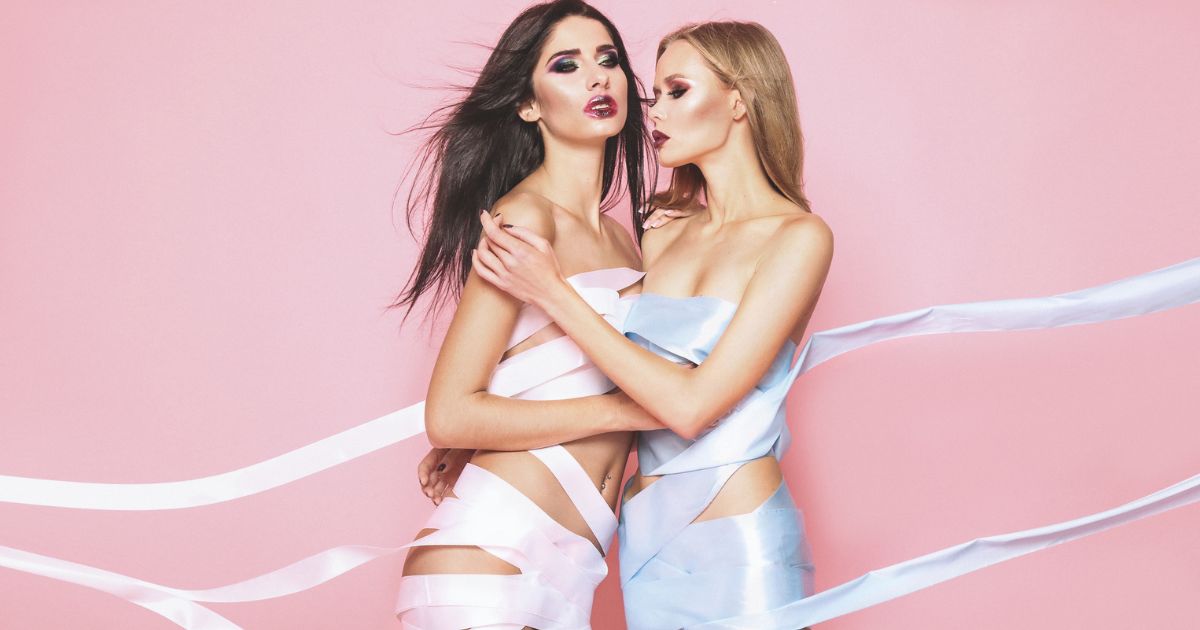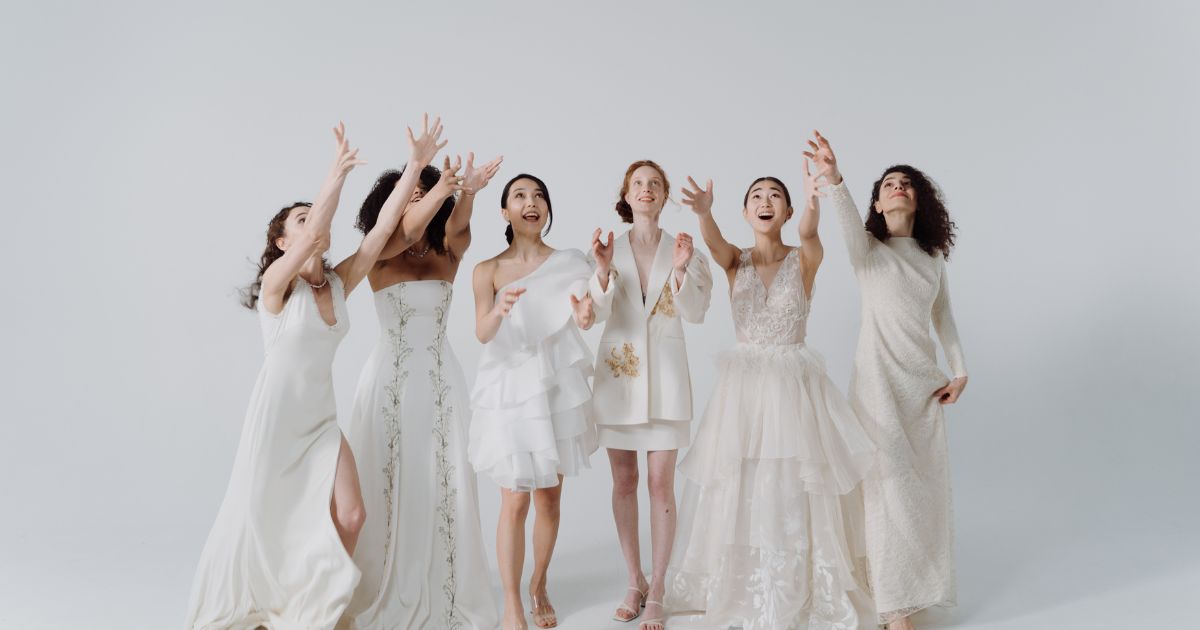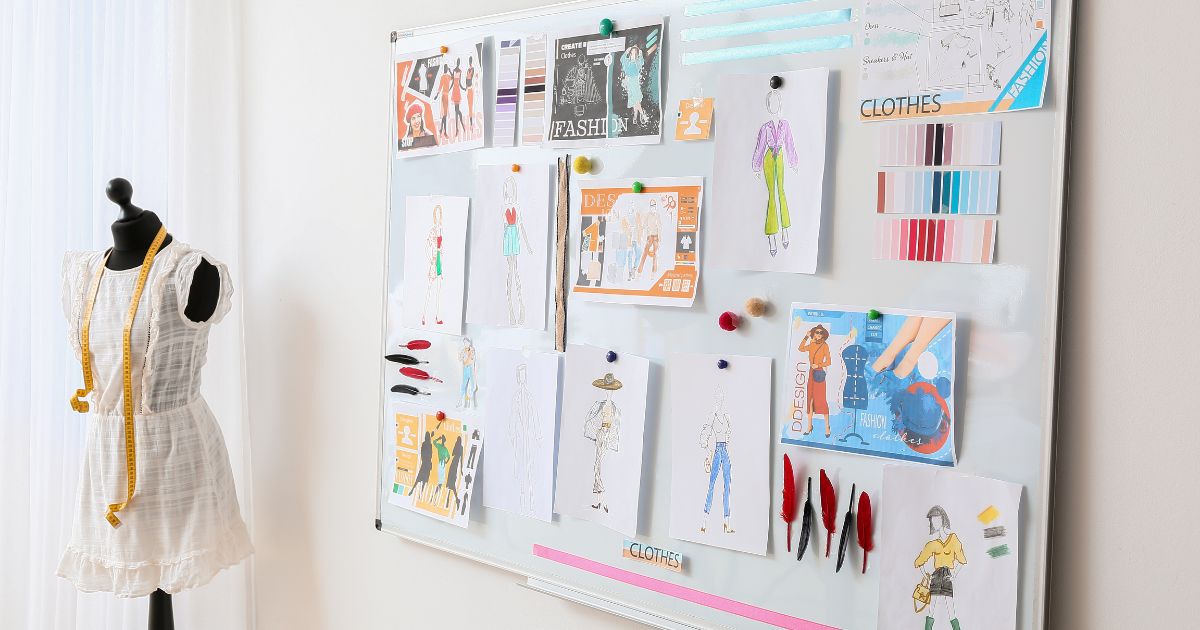With utmost westernization being adopted by Indians in various walks of life, Indian fashion has also embraced and imbibed the traditions and cultures of fashion from various visitors for centuries. The origin of fashion in India can be traced back to the Indus Valley Civilization. There are various records depicting Indian royals in glamorous attires, having exquisite dressing style made of the finest of woven silk, velvet, brocade, muslin, and cotton fabrics with gold, silver, or gemstone, embroidery, zari made from gold threads, necklaces, earrings, and bracelets made of gold, silver, emeralds, rubies, and diamonds, pearls, turbans or pagdi and silk robes. These Indian dynasties and rulers gave various forms of clothing such as the Maheswari Sarees by the Holkars of Indore, Shindeshahi Pagdi of the Maharaja of Gwalior, Sherwani of the Nizams of Hyderabad, Thewa Jewelry of Maharawat of Partapgarh, Peshwai jewelry of the Peshwa. Indian footwear also has a cultural and traditional history. Juttis worn by the Mughals, Mojari worn by the Maharajas of Jaipur and Jodhpur, Kolhapuri Chappal, Pula Chappals of Himachal Pradesh are a few examples of footwears. The Britishers have influenced the Royals to adopt western styles. As a result of which the royals incorporated trousers and shirts into their lifestyle.
The textiles are the foundation for the strong Indian fashion history. The excellent quality of the fabric’s beauty is redefined by detailed embroidery, dyeing, or print work. Indian Jewelry is also famous around the globe. It is well known that India has a treasure of precious metals, stones, and pearls. The Piathani of Paithan, Peshwai Jewelry (like bajuband), Kolhapuri Jewelry (like Thusi, Saaj, Chincpeti), Kolhapuri Chappal of Kolhapur, Kanjeevaram of Kanchipuram, Pashmina of Kashmir, Banarasee sarees from Banaras (Varanasi), etc. These traditional costumes are worn during religious events and festivals. Different communities had their own style or manner of dressing. These traditional costumes were also the result of the hierarchical societal system, gender, status, geography, and climate. As a result, people had to follow and abide by their own traditional attire. However, now people are experimenting with the attires of different traditions. After all, fashion is all about individual styles and preferences. Indian fashion designers take inspiration from the rich, historic, and cultural heritage that has always been in vogue. Fashion designers are preserving exquisite traditional fashion by incorporating rich Indian art forms and taking cultural inspirations . They have taken India’s cultural and traditional fashion into the international markets. Today Indian Designers such as Manish Malhotra, Sabyasachi Mukherji, Anita Dongre, Naeem Khan, Gaurav Gupta, Manish Arora, and many more, have gained international recognition.
Similarly, the film industry has a major role in influencing Indian fashion. Indian celebrities such as Aishwarya Rai Bachchan, Sonam Kapoor, Deepika Padukone, and Priyanka Chopra, to name few, have donned sarees at various international events. Similarly, international celebrities like Julia Roberts, Oprah Winfrey, Princess Diana, Naomi Campbell, Elizabeth Hurley, and Mark Zuckerberg, have made appearances wearing ethnic wear. Apart from these Hollywood movies such as Eat, Pray, Love and 27 Dresses, Spider-Man: Homecoming, etc. have also depicted Indian ethnic costumes. It won’t be wrong to say that today the world is embracing Indian traditional and cultural fashion. Several international fashion designers Gucci, Burberry, and Christian Dior took inspiration from Indian designs and presented them to the world. The film industry has also influenced Indian fashion by showcasing western outfits that have increased demand and craze. As a result, various international brands have entered the Indian market. Today almost all brands are available in India.
Indian ethnic wear has gained international fame in the recent past but the western influence on Indian society goes back to the 19th Century. Parsis were the first to incorporate the western style followed by upper-class men. However, transformation in women’s attire has been slow as a result of various factors yet it was a continuous steady growth. The British innovations such as the “Blouse or Petticoat” that are worn under the saree are now considered traditional garments. Similarly, the origin of the salwar kameez can be traced back to the era of the Mughal empire, when Muslim women wore divided garments. This shows how various influences on fashion are beautifully blended into the culture and heritage of India.
Jewelry Brands like P.N.Gadgil, Waman Hari Pethe, Tanishq, TBZ, Kalyan jewelers, Malabar, etc. provide a varied range of traditional and modern jewelry. There are fashion brands that gained popularity over decades such as Fab India, Pantaloons, Hidesign, Louis Philippe, Da Milano, Lakme, etc., over the past few years various brands such as Aadyaa, Suta, Chidiyaa, Colourchaap, FableStreet, The Ethnic Co., etc., have been established and are also gaining popularity. Some of the brands such as Noorkari, Eternity by Sakshi, Chakori Ethnic, Amrapali, etc. are working with the artisans. These fashion brands and designers are contributing towards sustainability by ensuring that their products are sustainable as well as encouraging their customers to make informed decisions while buying such products. India has witnessed the emergence of several cosmetic and skincare brands Dot & Key, Plum, Renee cosmetics, Earth Rythm, Sugar, mamaearth, mcaffaine, Swiss Beauty, Juicy Chemistry, Kama Ayurveda, and Forest Essentials.
The emergence of Influencer Marketing popularized makeup and skincare. They made the masses aware of the techniques and tools of skincare routines, cosmetics along with various brands available. They are also looked upon as role models with reference to their dressing styles and for various accessories they use. On one hand, Influencers are to be credited for normalizing various elements of the fashion industry, on another, the emergence of e-commerce platforms like Nykaa, Myntra, Ajio, Tata CLiQ, Tata Neu, Amazon, and Purplle gave opportunities to various fashion brands to make available their products in the Indian market that can be accessed by anyone from any place. This inclusive step allowed the individuals to lay their hands on the products that were accessible only at specific locations. It can be said that the fashion industry is spreading its roots in remote Indian soil.
Fashion designers and brands are contributing to preserving India’s rich culture and heritage through their wide range of fashion products. What is essential is to support and give recognition to the artisans and craftsmen. The tradition and heritage will be preserved only when these artisans and craftsmen are given their due recognition and paid adequate remuneration for their creativity and skills. People are willing to pay any price for international brands, however, when it comes to homegrown brands they always expect them to be of low cost yet better quality as well as quantity. However, this scenario is changing slowly, people are opting for Indian brands. Now, Indians are opting homegrown brands and supporting and encouraging upcoming talent.
While it is true that styles adopted by the Indians are influenced by the royals, films, western culture, or any other element the regional traditional attires would never be out of vogue. Western clothing might be trendy or comfortable to wear however, Indian wear then be it saree, churidar, sherwani, pajama, dhoti, pagdi, pheta has its own glamour. To quote Kajol from the movie Kabhi Khushi Kabhi Gham, “Lucknow da kurta, Pathani salwar; tab lage mard, varna lage bekaar”. As mentioned earlier, fashion is all about individual preferences. Each Individual must wear what makes them feel confident, beautiful (not just from their appearance but also from within), stylish, elegant, and happy. Yet till date individuals (both men and women) are condemned for their choice of attire. India believes in unity in diversity. Indians have always welcomed and hosted everyone with love and affection. Incorporating western styles and forms while preserving our traditional and cultural heritage can bring a beautiful balance. Recently, Indian celebrities can be seen slaying the fusion look.
Fashion is no more restricted to celebrities or a particular section of society or cities. These stylish, elegant fusions are in vogue and embraced especially, by the younger generation. These fusion trends have brought people closer to traditional attires. As a result, Indian culture and heritage is not only being preserved but is also gaining popularity on the international platform.
Author: Pranali Shetye







